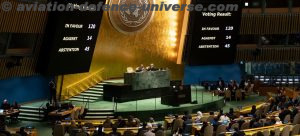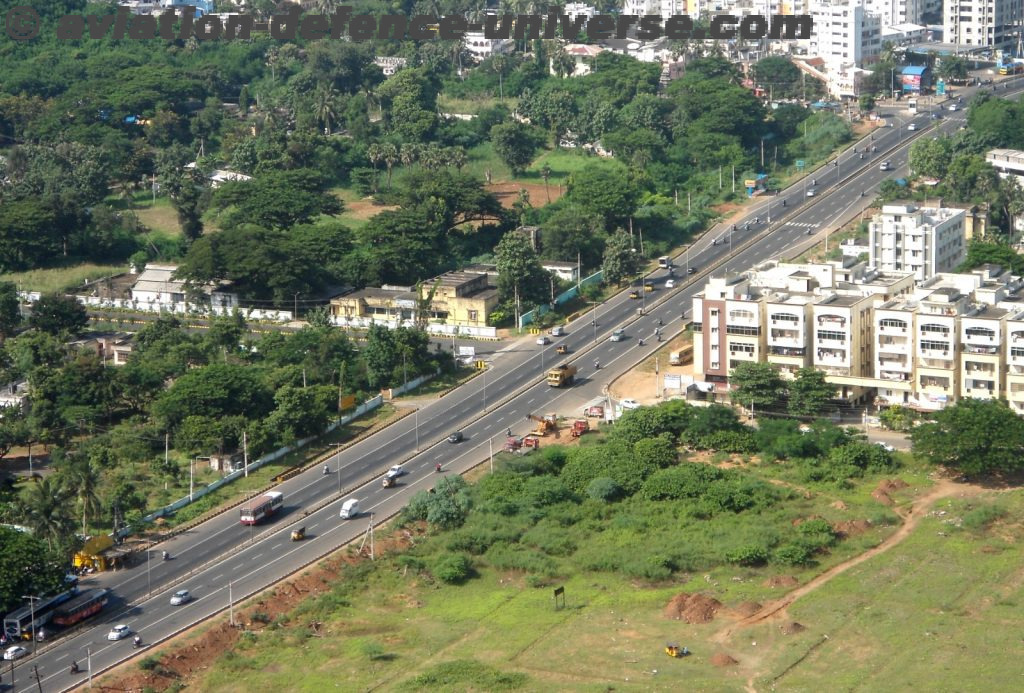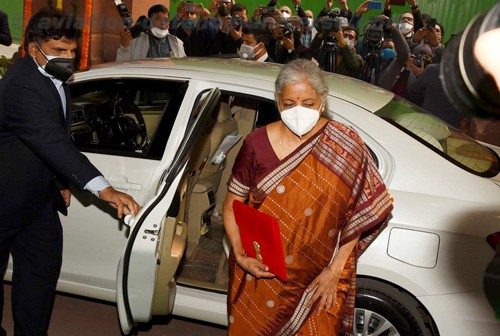

By Wing Commander Vishal Nigam (Retd.)
New Delhi. 04 February 2022. On 01 February 2022, Nirmala Sitharaman tabled her fourth budget in the Indian Parliament. During a ninety minute crisp budget speech, she outlined the policy directive, vision statement and placed before the country the income statement for the Financial Year 2022-23 (FY23). Her effort to revive growth after a period of severe shock resulting in contraction due to the ongoing pandemic was a brave attempt in the two most difficult years for a finance minister in the new millennium.
According to the Economic Survey 2021-2022 – Gross Domestic output at constant prices (Base Year: 2011-12) are back to the pre-pandemic level following a deformed W-shaped recovery post a severe shock due to repeated COVID-19 waves, supply side disruptions and inflationary trends.
Despite the government falling short in its effort to absorb the shock on the demand side, the budget focused on the supply side intervention by increasing capital expenditure (Capex) to push infrastructure projects and hoping for a multiplier effect to revive demand.

The Minister increased spending on infrastructure with a hope to kick start private investment crowded in by public investment, and through the multiplier drive the demand side in the near medium term; notwithstanding marginal deviation from the fiscal deficit target in FY 22.
Nirmala Sitharaman announced an increase in Capex from INR 5.54 lakh crore ($74 billion)[1] in FY22 to INR 7.5 lakh crore ($103 billion) in FY23 to steer PM GatiShakti – the seven engines comprising of Road, Railways, Airports, Ports, Waterways, Mass Transport and Logistics Infrastructure – to boost the economy.
The major beneficiaries of the Capex are the Department of Telecommunication; Atomic Energy, Space, Road Transport and Highways, Housing and Urban Affairs, Home Affairs and Ministry of Defence with a budget allocation of INR 1.52 lakh ($20 billion), an increase from INR 1.39 lakh ($18 billion), revised estimates (RE) in FY22.

The budget is an income statement and not the White Paper on National Defence. In terms of defence outlay, it broadly indicates the share of defence as a percentage of total expenditure – INR 3,944,909 crore ($527 billion) for FY23.
Post budget analysis can at most underline the inadequacy in the share of rupee set aside for defence, but based on the defence outlay neither conclusion on the nation’s war fighting capability nor its intent to protect the country’s sovereignty can be drawn since funds up to INR 2000 crore ($300 million) can always be made available for accelerated sanction of capital acquisition proposals under the enhancement of financial powers.
The capital outlay is largely considered as funds for the modernisation of the armed forces required to develop across spectrum capabilities. Defence is the second largest beneficiary of Capex; however, objectively looking at the expenditure profile, the share of defence capital outlay as a percentage of total Capex has slid from 31% in FY21 to 20% in FY23.
Further discounting for transfers to other departments and heads – roughly INR 1, 31,869 crore (17.6 billion) in FY23 is left available for modernisation including servicing committed liabilities of the previous years
- Ministry of Defence (Civil) will transfer INR 3,500 crore ($468 million) to Central Road and Infrastructure Fund under Demand Note 19
- INR 14,500 crore ($1.94 billion) will be offloaded for the cost of land and construction, expenditure towards National Cadet Corps (NCC), Ex-Servicemen Health Scheme (ECHS) etc under Demand Note 21
- Another INR 2,500 crore ($335 million) has been allocated as Emergency Authorisation for the newly created Defence Public Sector Undertakings (DPSUs) – presumably seed capital for the seven state owned corporate entities restructured from erstwhile Ordinance Factory Board (OFB)
- In addition, INR 1,300 crore ($174 million) for Joint Staff – an increase from INR 583 crore ($78 million) spent in FY21, is possibly an instalment earmarked to restructure the armed forces into five war fighting theatres.
The allocation of 8 paise in a rupee is the budgeted amount for defence and additional funds required for exigencies are always made available at short notice. The government is also looking at building a corpus of a non-lapsable fund.
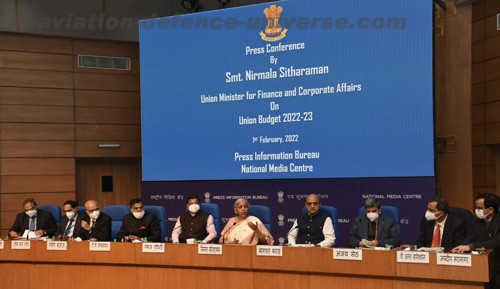
The 15th Finance Commission (2021-26) has recommended a dedicated non-lapsable fund called the Modernisation Fund for Defence and Internal Security (MFDIS) to bridge the gap between budgetary requirements and allocation of capital outlay with an estimated corpus of INR 2.4lakh crore ($32 billion) over the next five years (2021-26). On the approval of the scheme – INR 1.5 lakh crore ($20 billion) will be transferred to the Consolidated Funds of India while the balance will be generated from disinvestment of Public Sector Enterprises (PSEs) and monetisation of defence land.
The Minister’s focus in the budget was on key sectors – defence has never been the underlying sector in a budget speech. However, this time the Minister indicated her intent to drive the defence economy by encouraging the private sector and start-ups to participate in the design and development of defence systems and platforms in collaboration with the Defence Research and Development Organisation (DRDO) through a Special Purpose Vehicle (SPV) model; announced a simplified custom tariff structure for parts and sub-part of identified platforms, and an increase in the share of capital procurement for the domestic industry.
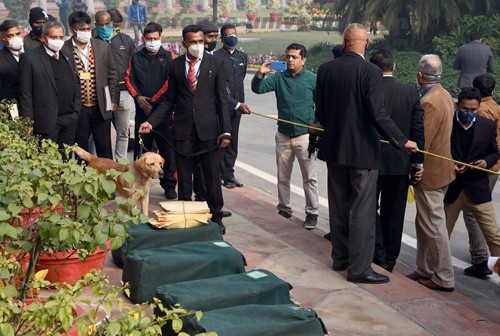
At a time when the world is devastated by Covid-19 and India too is suffering from its impact – the focus of the Finance Minister was on ‘continuity’. She backed her instincts and allocated funds for the identified sectors which in her opinion would kick-start private investments and drive demand. Almost INR 11 lakh crore ($147 billion) Capex across central, state government and private sectors, largely MSMEs –is an indication of the Minister’s intent to accept a higher fiscal deficit to drive growth and create jobs in the coming years.
(Wing Commander Vishal Nigam (Retd.) is a Delhi-based strategic analyst. He is the author of Dragon in the Air Transformation of Aviation Industry and the Airforce. The views in the article are solely the author’s. He can be contacted at editor.adu@gmail.com)


































